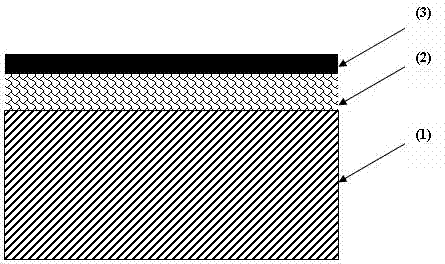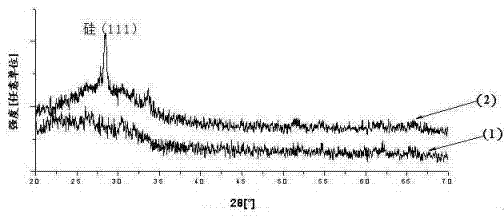Method for inducing amorphous silicon film with tin to be crystallized into polycrystalline silicon film
A technology of amorphous silicon thin film and polycrystalline silicon thin film, which is applied in semiconductor/solid-state device manufacturing, electrical components, circuits, etc., can solve the problems of difficult application and high crystallization temperature, and achieve low cost, simple process structure and convenient operation Effect
- Summary
- Abstract
- Description
- Claims
- Application Information
AI Technical Summary
Problems solved by technology
Method used
Image
Examples
Embodiment
[0031] The process and steps in the embodiment of the present invention are as follows:
[0032] (1) Cut the ordinary glass substrate into 1cm×1cm size, wash off the surface dirt with detergent, and then ultrasonically clean it in acetone and deionized water for 15 minutes, then put it in an oven for drying;
[0033] (2) Deposit a layer of amorphous silicon (a-Si:H) film on a glass substrate by plasma enhanced chemical deposition (PECVD) with a thickness of about 200nm. The substrate temperature during deposition is 200°C and the deposition pressure is 10 -5 Pa, gas glow pressure range 50Pa-250Pa, RF power supply 13.56MHz, gas source is 100% pure silane (SiH 4 ), hydrogen used as dilute silane (H 2 ) purity is 5N;
[0034] (3) Soak the grown amorphous silicon sample in 1% hydrofluoric acid (HF) for 10 seconds, remove the oxide layer on the surface of the amorphous silicon film, take it out, rinse with deionized water, and then nitrogen (N 2 ) to dry, and then put it into a ...
PUM
| Property | Measurement | Unit |
|---|---|---|
| thickness | aaaaa | aaaaa |
| particle size | aaaaa | aaaaa |
| thickness | aaaaa | aaaaa |
Abstract
Description
Claims
Application Information
 Login to View More
Login to View More - R&D
- Intellectual Property
- Life Sciences
- Materials
- Tech Scout
- Unparalleled Data Quality
- Higher Quality Content
- 60% Fewer Hallucinations
Browse by: Latest US Patents, China's latest patents, Technical Efficacy Thesaurus, Application Domain, Technology Topic, Popular Technical Reports.
© 2025 PatSnap. All rights reserved.Legal|Privacy policy|Modern Slavery Act Transparency Statement|Sitemap|About US| Contact US: help@patsnap.com



